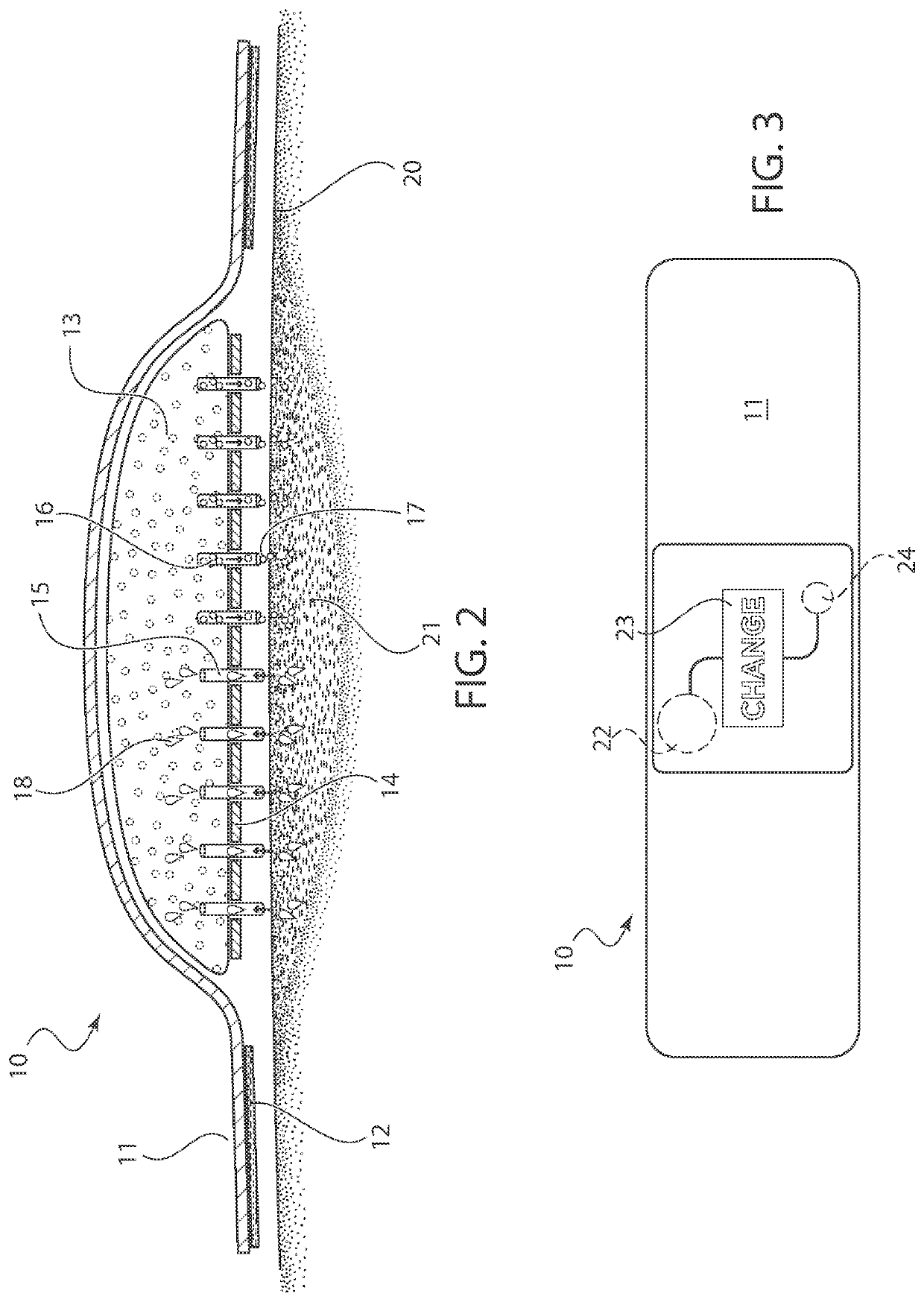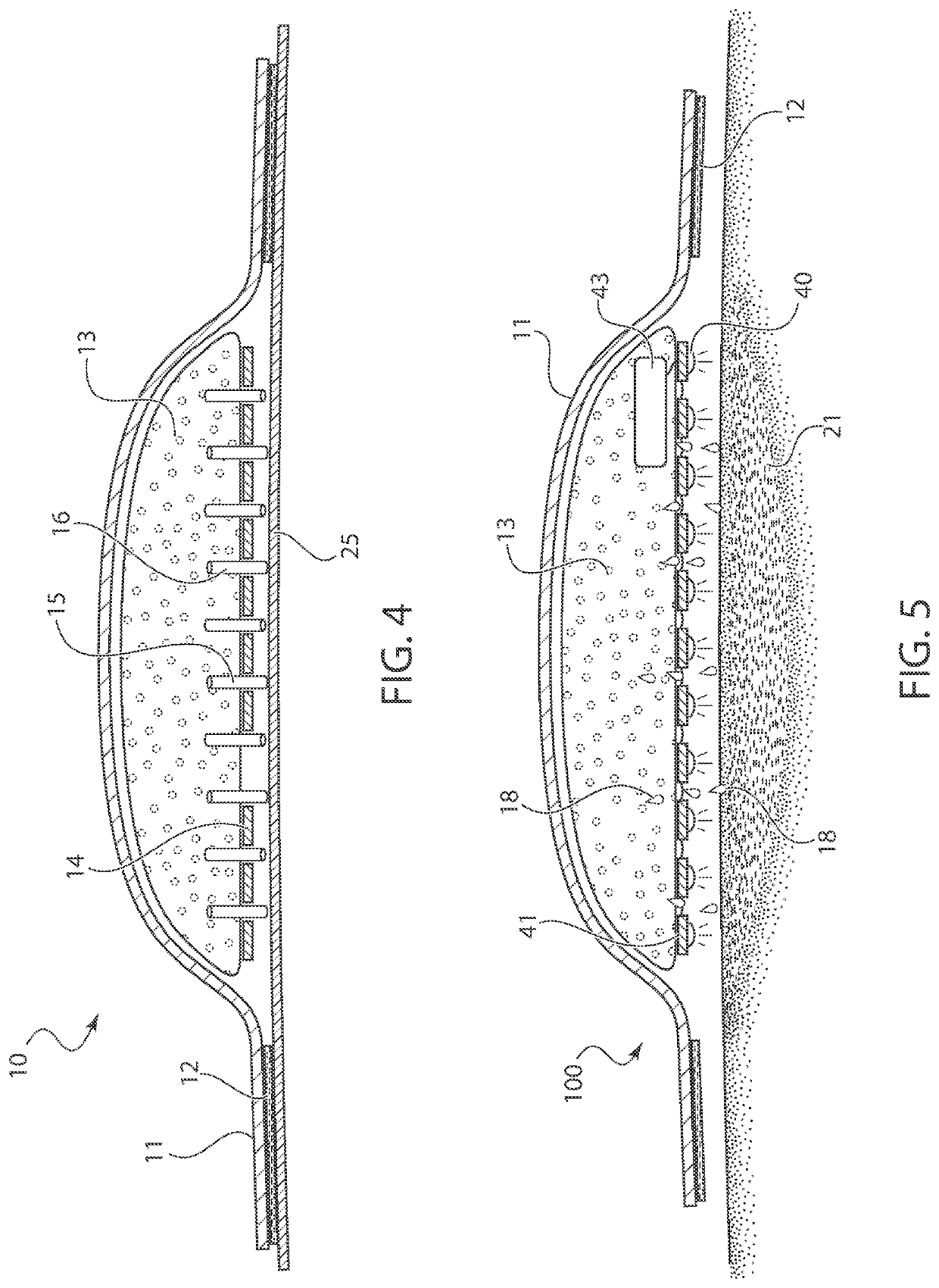Bandage with UV disinfectant and microneedles for antimicrobial delivery and fluid absorption from a wound
a technology of disinfectant and microneedle, applied in the field of bandages, can solve the problems of decreasing healing time and risk of infection, and achieve the effect of speeding up healing
- Summary
- Abstract
- Description
- Claims
- Application Information
AI Technical Summary
Benefits of technology
Problems solved by technology
Method used
Image
Examples
Embodiment Construction
[0026]Referring now in detail to the drawings, FIG. 1 shows a cross-sectional view of the bandage 10 according to the invention after application to a patient's skin 20 for covering a wound 21. Bandage 10 comprises a film layer 11, an adhesive layer 12 extending the length of film layer 11, and an absorbent layer 13 disposed centrally along film layer 11, so that end sections 17 of film layer 11 extend beyond absorbent layer 13. A non-stick layer 14 is applied to the bottom of absorbent layer 13 to prevent absorbent layer 13 from sticking to the wound 21. Non-stick layer 14 is water permeable and can be configured as a screen or with perforations to allow fluid to pass through to absorbent layer 13. Non-stick layer 14 can be configured of any suitable material, such as silicone or polypropylene. Film layer 11 can be manufactured from any suitable film material that is commonly used in disposable bandages. Common film materials are extruded polymers, but woven materials could also be...
PUM
| Property | Measurement | Unit |
|---|---|---|
| permeable | aaaaa | aaaaa |
| electrical power | aaaaa | aaaaa |
| solar energy | aaaaa | aaaaa |
Abstract
Description
Claims
Application Information
 Login to View More
Login to View More - R&D
- Intellectual Property
- Life Sciences
- Materials
- Tech Scout
- Unparalleled Data Quality
- Higher Quality Content
- 60% Fewer Hallucinations
Browse by: Latest US Patents, China's latest patents, Technical Efficacy Thesaurus, Application Domain, Technology Topic, Popular Technical Reports.
© 2025 PatSnap. All rights reserved.Legal|Privacy policy|Modern Slavery Act Transparency Statement|Sitemap|About US| Contact US: help@patsnap.com



